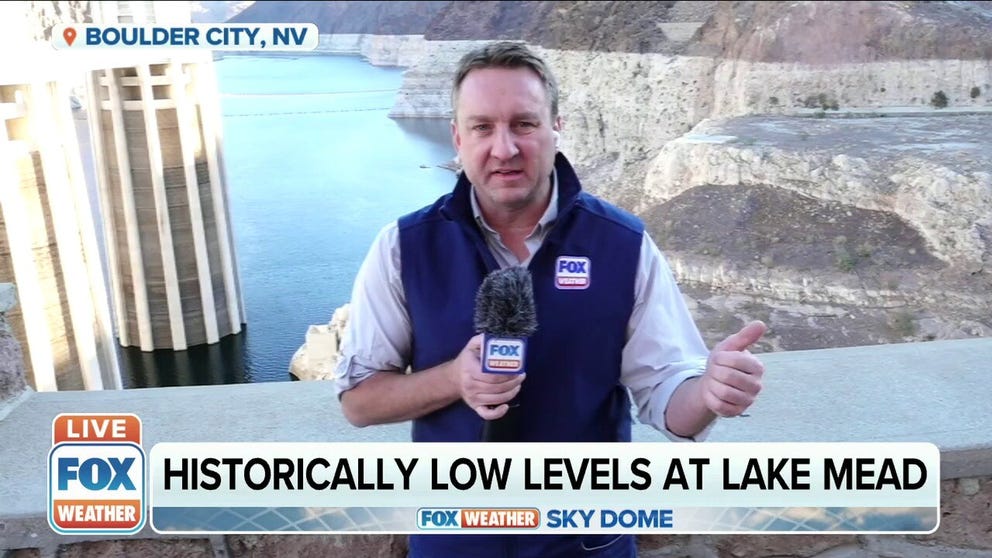Record-breaking heat, droughts shrink Hoover Dam's ability to generate power
The issue at Lake Mead is cutting water supplies to Arizona by nearly 20% and by 7% for Nevada
Historically low levels at Lake Mead
The nation’s most extensive reservoir is experiencing historically low levels, prompting federal authorities to declare a water shortage for drought-stricken southwestern areas. The issue at Lake Mead is cutting water supplies to Arizona by nearly 20% and by 7% for Nevada.
BOULDER CITY, Nev. -- The nation’s most extensive reservoir is experiencing historically low levels, prompting federal authorities to declare a water shortage for drought-stricken southwestern areas.
The issue at Lake Mead is cutting water supplies to Arizona by nearly 20% and by 7% for Nevada.
"It’s a critical resource for the 40 million people who in the Colorado River Basin rely on it, and it’s really what makes living in the West possible," said Mike Bernardo, the river operations manager for the Lower Colorado basin region of the U.S. Bureau of Reclamation.
The dam contains enough concrete to build a sidewalk 4-feet wide around the entire earth at the equator.
The Colorado River Basin is in the 22nd year of drought, according to U.S. Bureau of Reclamation spokeswoman Patti Aaron. She is an expert on the importance of this system and why it stands as a West symbol.
"We were at about 95% of capacity at Lake Powell and Lake Mead in 2000 when the drought began," Aaron said. "We are at 35% capacity at Lake Mead today."
Rows of massive generators circulate water and create electricity for hundreds of thousands of people, but it’s not a simple engineering task by any means.
Standing on top of the Hoover Dam, one can see the effects of the drought, where water lines indicate how high the water once was.
"We are now in territory at Lake Mead that we have not seen these elevations since the lake was initially filled in the early 1930s," Bernardo said.
Officials said it will take three to four years of above-average snowpack in the Rockies to refill Lake Mead and get the system back to normal flow.
If water levels continue to drop, there won’t be enough water at Lake Mead’s Hoover Dam or Lake Powell’s Glen Canyon Dam to generate non-polluting hydroelectricity for roughly 1 million homes across Nevada and California.







